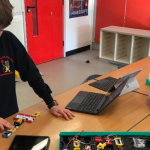Motivating students in the classroom is a fundamental aspect of effective teaching. When students are motivated, they are more engaged, participate actively, and demonstrate a greater willingness to learn. As a teacher, it’s essential to cultivate an environment that fosters motivation and enthusiasm for learning. Here are seven strategies to help you achieve this goal:
1. Create a Positive Learning Environment
Establishing a positive and inclusive classroom atmosphere is crucial for student motivation. Encourage open communication, respect, and empathy among students. Make sure to acknowledge and celebrate their achievements, both big and small. When students feel safe, supported, and valued, they are more likely to be motivated to participate and excel academically.
2. Set Clear Learning Goals and Expectations
Clearly outline the learning objectives and expectations for each lesson or unit. When students know what is expected of them and understand the purpose of their learning, they are more likely to stay motivated. Break down larger goals into achievable milestones, allowing students to track their progress and experience a sense of accomplishment as they meet these milestones.
3. Incorporate Varied Teaching Methods
Utilize a mix of teaching approaches to cater to different learning styles and preferences. Incorporate interactive activities, group discussions, hands-on experiments, multimedia presentations, and collaborative projects. By diversifying your teaching methods, you can engage students and make learning more enjoyable, ultimately boosting their motivation to participate actively.
4. Use Real-World Relevance
Connect classroom lessons to real-life applications to demonstrate the practical relevance of what students are learning. Explain how the knowledge and skills they are acquiring will be beneficial in their future careers or daily lives. When students see the purpose and value in their education, they are more likely to remain motivated and enthusiastic about their studies.
5. Offer Constructive Feedback and Recognition
Provide timely and specific feedback on students’ performance, highlighting their strengths and areas for improvement. Celebrate their achievements and efforts, no matter how small, to boost their self-esteem and motivation. Recognize individual and group accomplishments through praise, certificates, or classroom displays. Feeling acknowledged and appreciated encourages students to continue putting in their best effort.
6. Foster a Growth Mindset
Encourage a growth mindset by emphasizing the power of effort, perseverance, and learning from failures. Teach students that intelligence and abilities can be developed through dedication and hard work. Help them understand that making mistakes is a natural part of the learning process, and it’s an opportunity to grow and improve. A growth mindset cultivates resilience and a strong desire to learn and succeed.
7. Allow Student Choice and Autonomy
Offer opportunities for students to have a say in their learning experiences. Allow them to choose topics for projects, pick reading materials, or suggest alternative assignments within the curriculum. Providing autonomy helps students feel a sense of ownership over their learning, making them more motivated and responsible for their educational journey.
In conclusion, motivating students in the classroom is an ongoing and dynamic process that requires attention, creativity, and adaptability. By creating a positive learning environment, setting clear expectations, using diverse teaching methods, demonstrating real-world relevance, offering constructive feedback, promoting a growth mindset, and allowing student autonomy, you can effectively motivate your students and enhance their overall learning experience. Remember, an inspired and engaged student is a student who is eager to learn and succeed.
Content Creator and Educator



